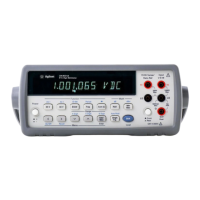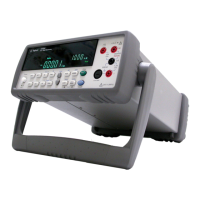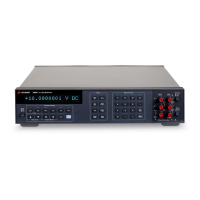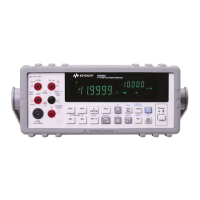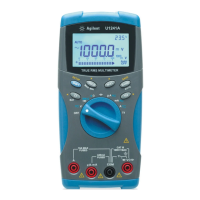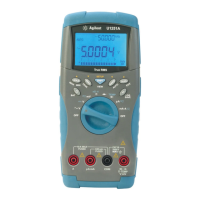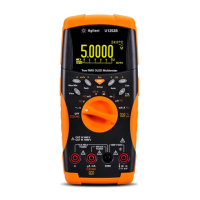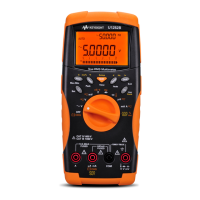112 34410A/11A User’s Guide
4 Measurement Tutorial
Temperature Measurements
The multimeter allows the measurement of temperature by measurement
of the temperature sensitive resistance of two different "Probe" types: the
resistance temperature detector (RTD) of .0385%/
o
C; and thermistors of
2.2 KW, 5 KW or 10 KW). There are a number of measurement parameter
and technique choices available to you, and these will affect various
aspects of the measurement:
• Temperature range and resolution can direct the probe–type choice.
• Choice of four–wire or two–wire technique will affect measurement
accuracy.
• Use of the auto zero feature will impact measurement speed and
accuracy.
• Choice of integration (measurement time) setting will affect measuement
accuracy and power–line noise rejection.
• Use of the offset compensation feature can eliminate residual voltages
in the test instrumentation or circuit.
Probe Type Choice
RTD's provide very accurate, highly linear relationships between resistance
and temperature, over a range of roughly –200 to 500
o
C. There is very
little conversion complexity for an RTD since it is so intrinsically linear.
The multimeter provides measurement for the IEC751 standard RTD,
which has a sensitivity of .0385%/
o
C.
Thermistors consist of semiconductor materials, and provide roughly
10 times the sensitivity of the RTD. Because they are semiconductors,
their temperature range is more limited, commonly to –80
o
C to 150
o
C.
Thermistors have highly non–linear temperature–resistance relationships;
therefore their conversion algorithms are more complex. The Agilent
multimeters use the standard Hart–Steinhart Approximation to provide
accurate conversions, with a typical resolution of .08
o
C.
2–Wire vs. 4–Wire Measurements
As with resistance measurements, four–wire temperature measurement is
more accurate, since it completely eliminates errors due to lead wire
resistance. Alternately, you can use the multimeter’s Null function to
remove the test lead resistance from the measurement (see “NULL
Reading:” on page 113).
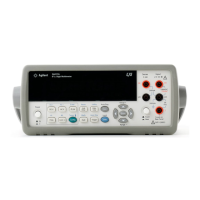
